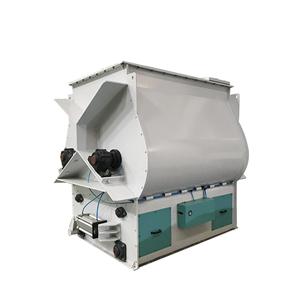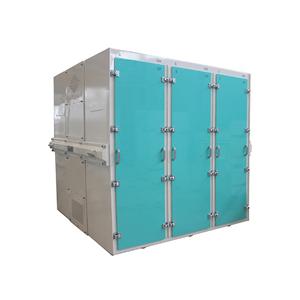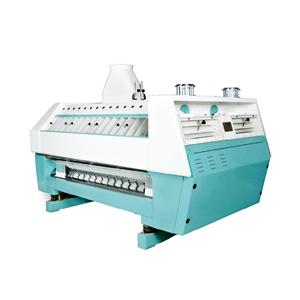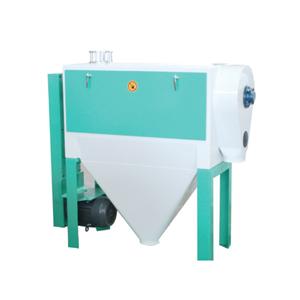CHINA: WORLD'S LARGEST AGRICULTURAL ECONOMY
"With one-fifth of the world population, China accounts for a quarter of total global food production. China is the world's largest agricultural producer by volume and the world's second-largest agricultural importer by value. It is the world's largest producer of wheat and rice. It is also a global producer of corn, millet, barley, and oilseed. After the trade tension with U.S., China has shifted its overall agricultural policy to promote greater soybean production, meanwhile maintaining self-sufficiency for wheat and rice production."
China is the world's most populous country, with a population of over 1.3 billion. Covering approximately 9,600,000 square kilometers, it is the third-largest country by total area. Since China began to open up and reform its economy in 1978, GDP growth has averaged almost 10 percent a year. China is now the second-largest global economy, the largest exporter and has the largest exchange reserves in the world.
China is the world's largest agricultural producer by volume and the world's second-largest agricultural importer by value. Agriculture employs about a third of the country's workforce, but it's only responsible for 10% of the GDP. China is a global producer of rice, cotton, pork, fish, wheat, tea, potatoes, corn, peanuts, millet, barley, apples, cotton, oilseed, pork, fish and more. Animal husbandry, fishing, and aquafarming are also important parts of China's economy.
With one-fifth of the world population, China accounts for a quarter of total global food production. China has recently enjoyed a run of good harvests. The Chinese government has established a national strategy on food security featuring self-sufficiency based on domestic grain production, guaranteed food production capacity, moderate imports, and technological support. Abiding by the principle of basic food self-sufficiency based on domestic grain production, China practices the strictest farmland protection system and a strategy of sustainable farmland use and innovative application of agricultural technology to increase farmland productivity. Through supply-side structural reform and institutional innovation in agriculture, China has raised grain productivity, modernized grain circulation, improved food-supply structure, and achieved steady development in the grain industry.
In 70 years, China's grain production has stepped up to a new level, changing from a shortage of grain supply in general to a basic balance of supply and demand. The country's grain output stood at 657.89 million tons in 2018. In 1949, the grain output was only 113.18 million tons. In 70 years, agricultural science and technology, such as water-saving irrigation and plastic film mulching, have been widely promoted and contributed much to agricultural production.
Currently, China supplies 95 percent of its own needs for grain. In 2001-2018, soybean accounted for 75.4 percent of imported grains, and the two main staple grains of rice and wheat together accounted for less than 6 percent. China plans to maintain a grain planting area of above 110 million ha, and a comprehensive grain production capacity of above 600 million tons. At present, the country has 134.88 million hectares of cultivated land, an increase of more than 4.8 million hectares over 1996. There are more than 117 million hectares sown with grain.
To encourage farmers to grow grain, increase their employment prospects and incomes, and protect them from low grain prices and problems in selling their output, the government has, over specified periods, on specific grain varieties in specific regions, and in accordance with specific prices, carried out procurement policies including minimum purchase price procurement and temporary state collection and storage. Since 2016, China has gradually improved the minimum purchase price policy for rice and wheat, further reduced the proportion of policy procurement.
MODERNIZED FOOD STORAGE
China has built new modern grain storage facilities and renovated old ones, further increasing storage capacity. In 2018 the storage capacity of qualified grain warehouses was 670 million tons, and that of simple warehouses was 240 million tons. Total effective warehouse capacity grew by 31.9 percent over 1996. Focusing on improving distribution, structure, and functions, China will encourage rational reconstruction, expansion, and construction of grain storage and logistics facilities, to advance the smart management of grain depots and guarantee their safe operation.
China is furthering reform of state-owned grain enterprises, encouraging the development of a mixed-ownership economy, promoting cross-regional integration of state-owned grain enterprises, and creating backbone grain enterprise groups. Chinese government aims to transform and upgrade the grain industry, cultivate large transnational grain groups, support the development of small and medium-sized grain enterprises.
In the medium to long term, per capita grain consumption and demand will drop slightly with social and economic development; the consumption of grain as feed for livestock and grain used for industrial purposes will continue to rise; total grain consumption will increase and pursue higher quality. In terms of grain production, agricultural costs are still rising, and resource and environmental carrying capacity is broaching its limit. Agricultural infrastructure is comparatively weak, and the capacity for disaster prevention and relief must be improved. China will find itself under considerable pressure to maintain steady grain production while ensuring green development and sustainable resource use. In terms of grain circulation, grain production will continue to be concentrated in core production areas. Transregional grain flows will increase, and there is still the risk of dramatic fluctuations in the grain market.
In 2019, China experienced some of the highest food cost increases in recent years driven in large part to African Swine Fever (ASF) decimating China’s pork production, which has led to cost increases of nearly all animal proteins. It imported 88.03 million tons of soybeans, and 20.47 million tons of grains and grain powders, accounting for 4.9 percent of the world grain trade in 2018. According to the General Administration of China Customs data, in 2018 the United States dropped behind Brazil to second place among China’s suppliers of total agricultural, fishery, and forestry products. Before 2018, the United States was China's largest supplier of such products for 18 consecutive years.
Since 2018, U.S. agricultural and related exports to China decreased due to higher tariffs, trade uncertainty, and slowing economic growth. Soybeans made up more than half of China's agriculture purchases from the United States in 2017, at about $12.2 billion. China bought about 60% of all exports of U.S. soybeans, the main U.S. export crop by value, before the trade war. China imports about $40 billion in soybeans a year, which are crushed to make meal for use in animal food and oil for cooking. After the trade tension with U.S., China has shifted its overall agricultural policy to promote greater soybean production, meanwhile maintaining self-sufficiency for wheat and rice production.
WORLD'S TOP WHEAT PRODUCER
China is the world's leading wheat producer, with approximately 17% of global production. Agricultural policymakers have undertaken efforts to improve the quality and yield of China's wheat production. The North China Plain accounts for more than 80 percent of China's national wheat production. Western regions of Xinjiang and Gansu provinces also produce wheat. The United States Department of Agriculture (USDA) forecasts 131.5 MMT wheat production for MY2019/20, slightly higher than MY2018/19. MY2019/20 total wheat consumption is forecast slightly lower at 124 MMT. Wheat millers nationwide report that feed mill demand for wheat bran and wheat middlings have fallen on weakening feed demand due ASF-related impacts, cutting milling margins.
MY2019/20 wheat imports are forecast at 3.5 MMT. China's wheat millers have a limited selection of origins to supply the growing demand for imported wheat product grades and classes to produce specialty products, such as low-protein cake flours and high-protein flours for pastries, bread, and pizza. Wheat millers are managing the uncertainty related to China's trade policies by buying greater volumes from Black Sea and Central Asian origins.
RICE
Rice is a major food source for China. It is the world's largest rice producer rice. 2019/20 season rough rice production is forecast at 207.1 MMT. And 2019/20 rice consumption is forecast at 145 MMT. In recent years, China's policy-makers have openly discussed how to facilitate expanded processing of rice into industrial ethanol and fuel ethanol production. In South China, less than 5 MMT of outdated, non-edible rice is processed as a lower-priced substitute for imported cassava for industrial and fuel ethanol production.
MY2019/20 rice imports are forecast at 5 MMT, up 500,000 tons from USDA's MY2018/19 forecast on low international prices. Chinese rice is generally uncompetitive in the global market because of high prices. However, China has started to develop export markets in Africa, Latin America, and North America, including Puerto Rico.
CORN
Along with wheat and rice, corn is one of the three principle crops in China. It is the second-largest global producer of corn. China produced 257 million tonnes of corn in 2018, comprising 7.8 percent of gross domestic product. MY2019/20 corn production is forecast at 255 MMT, down 2 MMT from last season as soybean area expands. 2019/20 season corn consumption is forecast at a record high 282 MMT, on expanded corn processing more than offsetting lower feed use. And 2019/20 corn imports are forecast at 5 MMT.






